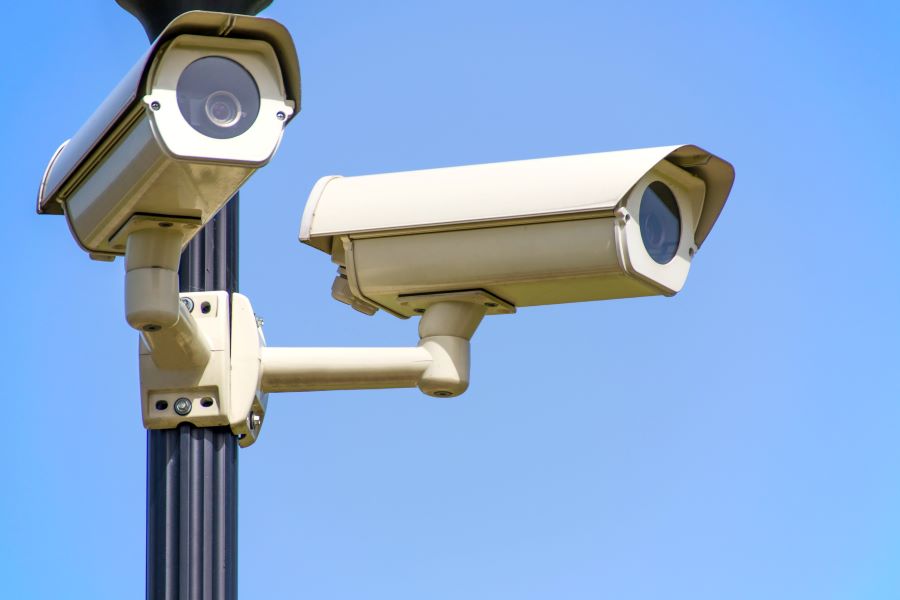Improve School District Surveillance Systems With A Cloud-Based Solution
For a more streamlined and cost-effective district-wide school surveillance system, consider switching to a cloud-based solution

Surveillance cameras are among the most effective solutions for schools to monitor their campuses for vandalism, break-ins, on-campus bullying, and other incidents. However, installing and maintaining school district surveillance systems is challenging for school districts with multiple schools that need coverage.
Unfortunately, too many schools in Rio Grande Valley, TX, still rely on outdated surveillance systems with high operational and maintenance costs, limited storage capacity, and no coordination with other schools in the district. Now is the right time to consider moving from a digital video recorder (DVR) or network video recorder (DVR) system to a streamlined, district-wide cloud-based surveillance solution. Keep reading to learn the key benefits of cloud storage and management.
SEE ALSO: Does Your School Need to Upgrade Its Existing Security System?
The Downsides of Traditional DVR and NVR Systems
A closed-circuit DVR surveillance system uses analog cameras to transmit video footage to a local, on-site server, where the footage is processed. DVR systems can only capture video, not audio. While these systems are very secure, the costs of installing physical servers in a school district with anywhere from a few schools to a few hundred schools can quickly add up. DVR systems require a large amount of electrical power to run security cameras and servers continuously. Additionally, all the security cameras in a DVR system must be physically connected to the server and a power source separately, which requires extensive, messy cabling for schools with multiple cameras in use.
An NVR surveillance system uses IP cameras that capture and process video and audio on the camera itself. IP cameras transmit the video footage over a shared wired or wireless network, where it’s stored on a server. Footage can be managed and viewed remotely using a software installation accessible via computer or mobile device. IP cameras also have smart functionality and advanced analytics like facial recognition capabilities. NVR systems are more flexible and scalable for school district use because security cameras at multiple schools can all be on the same network, enabling a comprehensive, district-wide surveillance system. While this type of system eliminates many overhead costs, NVR systems have massive network bandwidth requirements that could overload a school with a weak internet infrastructure.
Both DVR and NVR systems are significantly hindered by limited storage capacity, which can turn into a big problem for schools. Many schools need the ability to store video footage over longer time periods — like summer or the winter holiday — and watch it later to detect vandalism, break-ins, or other security incidents.
While traditional DVR and NVR surveillance systems are very reliable, the trend is shifting toward cloud-based storage and management systems for reduced costs, reduced bandwidth needs, and greater accessibility.
A Cloud-Based Surveillance Solution
Cloud-based surveillance systems are incredibly cost-effective and scalable for large school districts. Cloud-connected cameras record audio and video, then send the footage to a storage host on the internet. Online hosts can store vast amounts of data, enabling school districts to connect multiple schools on one system.
Users can access recorded and live stream footage by logging into a browser-based account from a local or remote computer, tablet, or mobile device. Video is only streamed across the network when pulled up, which significantly cuts down on bandwidth needs. Like an NVR system, cloud cameras have advanced video analytic tools to find and view selected videos easily by using keywords to search available footage.
The ability to watch live-streamed footage is a major advantage that cloud-based systems have over other surveillance systems. In an emergency, law enforcement officers or school administrators can pull up security footage on any network browser in real-time to view ongoing events.
Security is the biggest concern reluctant school administrators have about switching to a cloud-based solution. However, cloud-based solutions use firewalls, data encryption, and other security technology to protect recorded video footage.
Let ASAP Security Services help you update your school district surveillance systems. We have experience deploying large-scale AV projects for commercial businesses and organizations in Rio Grande Valley and across the state of Texas. Call us today at 877-418-ASAP or fill out a contact form online. We look forward to working with you!